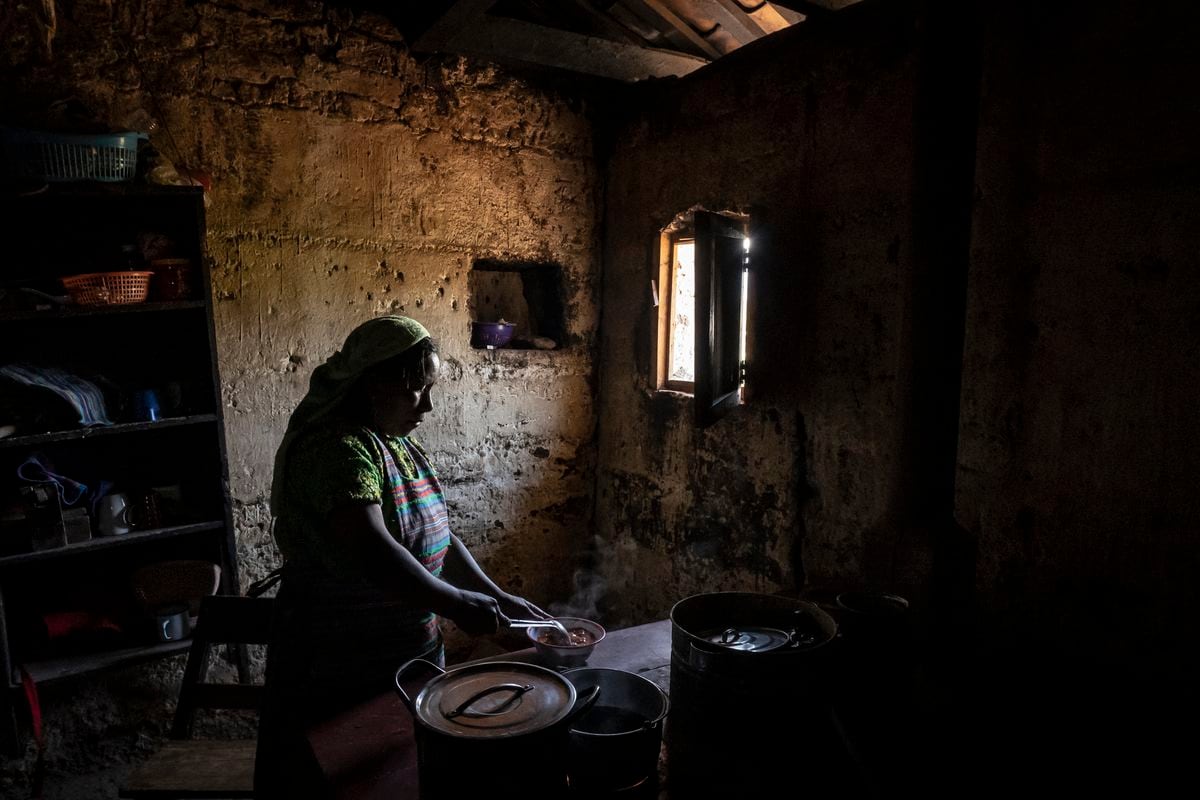Women have been one of the groups most affected by job losses during the pandemic.Paul Salazar / World Bank
Latin America's vital signs are slowly returning to normal after the shock generated by the pandemic, but many of them - such as employment, income, food and education - have not yet returned to their pre-crisis level.
Almost half of the households in the region have yet to return their income to the pre-pandemic level, despite government money transfer programs and increases in private transfers.
Although the employment rate registers some recovery in some countries, in most of them it still remains below the levels prior to the onslaught of COVID-19.
Worse still, there has been a decrease in the quality of available jobs and the number of hours of paid work per week, according to a set of surveys by the World Bank and the United Nations Development Program (UNDP) carried out in 24 Latin American countries. and the Caribbean.
Surveys revealed that Latin America and the Caribbean is facing an uneven recovery from the pandemic, and that it emphasized pre-existing disparities in the region, where the most vulnerable groups and the poorest have been disproportionately affected.
Conducted by telephone to those over 18 years of age, the surveys examined the impact of the pandemic in areas essential for regional recovery such as the labor market, income and food security;
the access of households to basic services such as education and health (including the vaccine against covid-19), internet, digital finance;
and gender equity.
Their results are the key to having concrete data on the scope of the crisis and to recommend informed measures that contribute to improving the quality of life in the countries of the region, according to the organizations.
Employment, gender and pandemic
For the region as a whole, the employment rate stood at around 62%, almost 11 percentage points below the pre-pandemic level. While it is worrisome that the employment rate has not yet recovered, it is equally worrisome that the quality of available employment has worsened: people who do work do so in worse conditions and those who do not do not find jobs in it. current job market.
It should be noted that job recovery has been slower for young people, for those with less education or formal training, and especially for women.
Since the start of the pandemic, women are twice as likely to have stopped working as men.
Added to this has been an increase in domestic responsibilities and, above all, the supervision of children's educational activities.
Lack of employment and falling incomes mean that food insecurity remains a concern for many families.
Although access to food has improved compared to June 2020, when the pandemic was at its peak in the region, large sectors of the population currently continue to face deficiencies.
According to the survey, food insecurity still affects almost a quarter (24%) of households in Latin America and the Caribbean.
This, despite the efforts made by governments through direct transfer programs and other benefits implemented to help families.
The pulse of basic services
The survey indicates that access to health services has returned to pre-pandemic levels, although reluctance to vaccinate remains a concern.
This is particularly true in Caribbean countries, rural households throughout the region, and populations with low educational attainment.
Regarding education, the rate of attendance to some type of educational activity is below the participation prior to the pandemic.
In addition, the level and type
Participation rate varies significantly between countries and within each country due to the diversity of contexts and access to digital technology.
The survey shows that 86% of children and young people of school age receive some type of education (face-to-face or remote).
However, there is a wide variation between countries: in Guyana and Guatemala the index reaches 64%, while in Peru and Chile it rises to 95% and 97%, respectively.
Queries also showed an increase in the use of digital means of payment: 26% of respondents said they use mobile wallets.
The increases were more notable among the rural population, the population over 55 years of age and those with low levels of education (primary or less).
The use of digital transactions, such as mobile banking or e-commerce, also increased, underlining the importance of digital technologies to stay economically connected or receive some type of monetary assistance.
Telephone surveys were conducted between August and September in Brazil, and in the rest of the region between May and July.
Each call lasted 25 minutes and 1,200 observations were made per country.
All the details of the survey and its results are in the following video:
Cecilia Martínez Gómez
is a communications consultant for the World Bank.

/cloudfront-eu-central-1.images.arcpublishing.com/prisa/NGYP7LFCN5BBVE2GFHWJMYFKZE.jpg)
/cloudfront-eu-central-1.images.arcpublishing.com/prisa/6GDDZWYNSVEJRDR6CKXCLQPGPQ.jpg)


/cloudfront-eu-central-1.images.arcpublishing.com/prisa/GSAG3AFDE5GZ7CR5RU42LT63UM.jpg)
/cloudfront-eu-central-1.images.arcpublishing.com/prisa/EMYXC3EVHNEG3OJHGIQCB2IVYA.jpg)
/cloudfront-eu-central-1.images.arcpublishing.com/prisa/2C5HI6YHNFHDLJSBNWHOIAS2AE.jpeg)

/cloudfront-eu-central-1.images.arcpublishing.com/prisa/GZBJJXO3EZE2HLSP5ZRRKYYYOY.JPG)